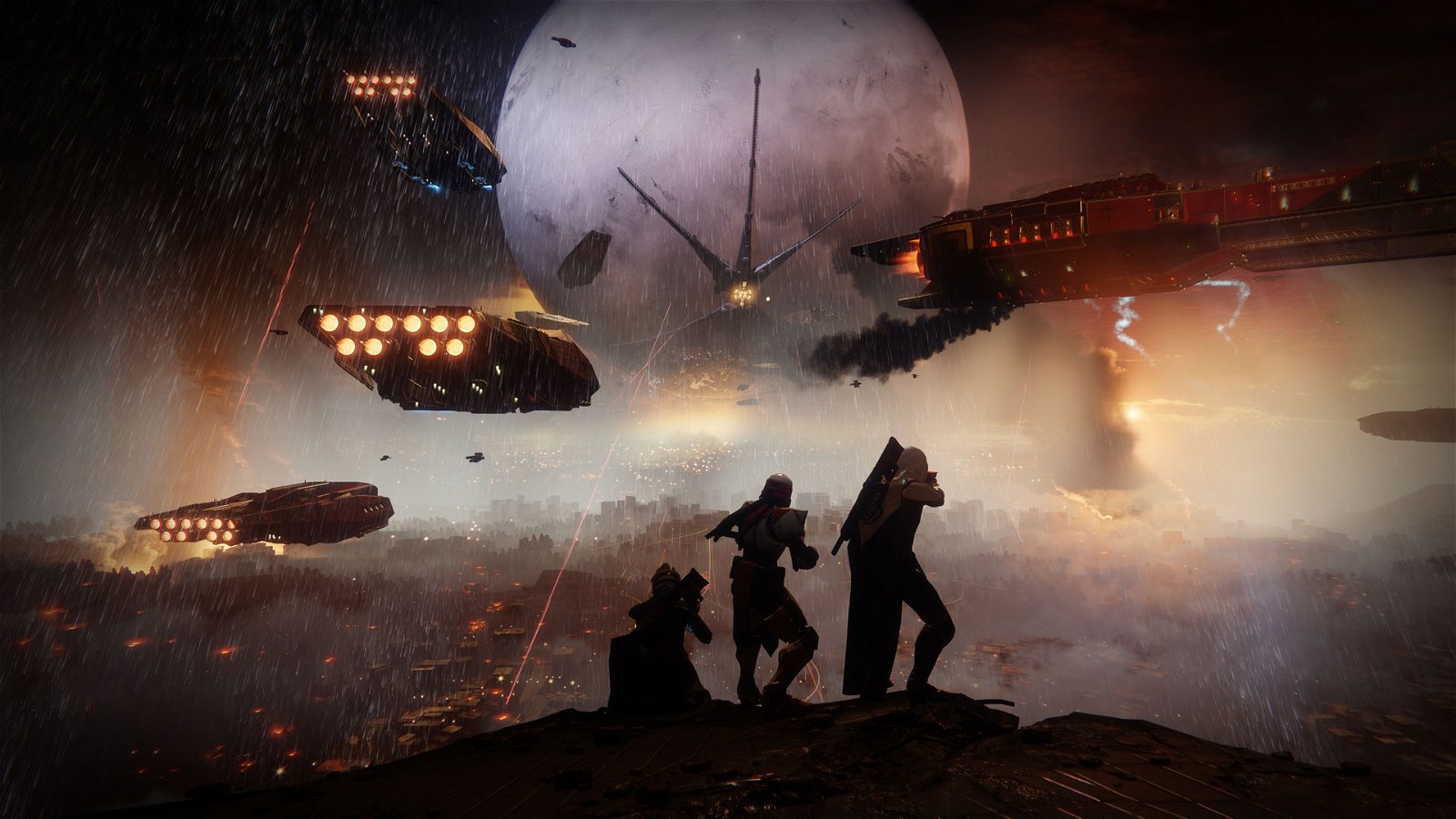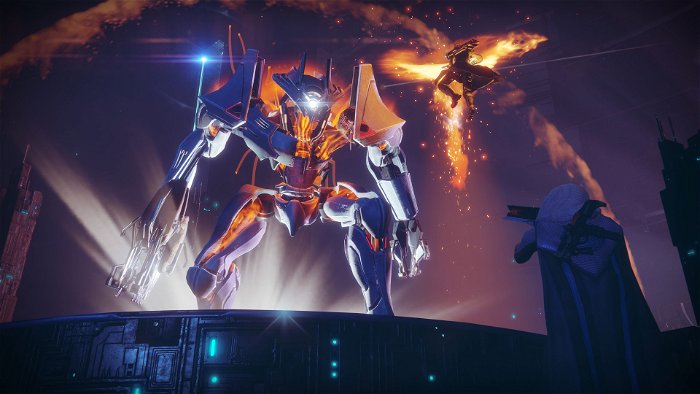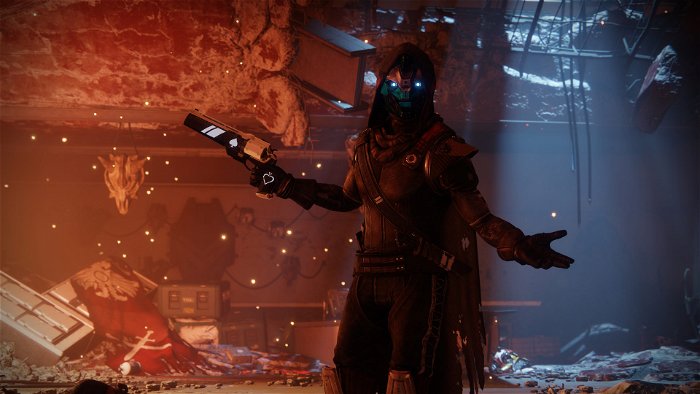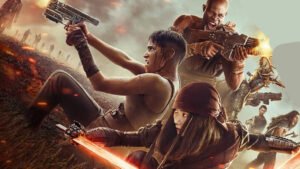Destiny 2 has hit consoles worldwide, giving new and veteran players a chance to dive into the world that Bungie crafted.
Following on the themes and ideas brought forth from Destiny way back in 2014, Destiny 2 ramps up the visuals and concepts, bringing a new, more vibrant world to players and allowing them to experience Destiny like never before.With such an expansive game played by millions of players across the globe, there are many aspects that need to be considered. The game needs to draw players in while still feeling like a fantasy that you can get lost in for hours at a time. At Gamescom 2017, CGMagazine had a chance to sit down with Jesse Van Dyke, the World Art Director of Destiny 2 and discuss the process of evolving the visuals and aesthetics of the first game while offering new things to returning players.
CGMagazine: With the release of Destiny 2, the series is being pushed into a different direction. How did that affect the art style? How did that change from Destiny to Destiny 2?
Jesse Van Dyke: Oh that’s an interesting question. When we want to sort of characterize Destiny 2 in just a few words you think of action and story—systems that ultimately work together to help establish what the game feels like. We need to work towards making those two things work better than anything else. What that really means is: art needs to service the overall experience. The art department tries to synchronize their efforts with teams, like the sandbox team, to make sure that ultimately the thing that we all work towards is making that that minute to minute experience work and the art assets actually help contribute to a better story. So practically speaking what that means is, for example, when we were in our PvP world, making sure that combat is easily readable. We don’t overwhelm; for the overall experience, the action really is what matters.
CGMagazine: Bungie has introduced new worlds in Destiny 2 that are not present in the original Destiny. Where did those concepts come from and how did you flesh those out into living, breathing spaces to play with your experience?
Jesse Van Dyke: The worlds in Destiny 2 are all new, they are brand new. They’re places players have never gone. We want to make sure that the complete offering offers variety more than anything else. We absolutely wanted there to be a place on Earth to go. In Destiny 2, players are forced out of their home, out of the last safe city, and so we wanted them to go somewhere else. We’ve talked about the European Dead Zone before, but this time around players actually get to go there—they get to explore. They are there by necessity because their homes are up there, the last safe city is gone. The reason why it’s important to us is because we want there to be some amount of relatability to all the worlds in Destiny 2. Now, having established the European Dead Zone as the place you go to on earth, we started thinking about other places we can go to. We’re really excited about some of the other [locations] that players go to, Titan is one of them. Io is another. We looked at those individual destinations and we started working on things like colour palettes. But while doing so we keep a very close eye on what the overall offering looks like, so that we don’t end up with redundancies. Every place has to pass the screenshot test; if you are to take a single very small picture of each, can [you] still distinguish them when you line them up right next to each other? Those are some of the considerations that go into building these things.
CGMagazine: Now, was there a place the team wanted to make sure made it into the game and had to have a certain design, or did you take what the team had in terms of gameplay and try and flesh it out visually?
Jesse Van Dyke: Speaking for the Art department specifically, we all say things like, “This has to be in there obviously”. But really the tricky thing is you want to make sure that the end result of all your efforts play well. So that leads us to a point where we start looking at things like, “Okay so what are our high level goals?”. Like I said before, story is really important to us. We fleshed out the narrative arc of humanity being forced out of their last safe city. We ask ourselves,”So what can we do to really emphasize that idea that you no longer have a home to return to?”. That moreso than a specific aesthetic goal lead us to start thinking about places like the European Dead Zone, to offset that we start thinking about places that are much further away, that are at the very outer aspects of the solar system, places like Titan. It’s things like that that help us arrive at the decisions. This is where we’re going to go to moreso than a specific individual agenda. It is very much like a high level vision that informs some of these kinds of decisions for Destiny 2.
CGMagazine: On that note, you mentioned it’s kind of like a real-world story. Was there ever a concept that just physically couldn’t be done based on visuals, engine etc. or did you find a way to make anything work within the story?
Jesse Van Dyke: I think what you’ll find frequently is that you start off with an idea, occasionally it will work immediately. But more often it will have potential at first but needs some sort of refinement. That process is something that we’re very comfortable with. I think the team at Lards makes an effort to not fear “not succeeding” the first time around. Because it’s such a core part of the creative process. And uh, you know we we go through these loops like, “This has potential, we need to like make this a little bit better”, And then over the course of doing so several times you incrementally start to see things come together [and] become better. The feeling grows better. We play the game a ton not only in the office but also at home because that’s ultimately our most important barometer. What does the game feel like when you play it at home? That [also] goes for the art. The artist plays the game at home, and they’re like, “Wait a minute, actually here’s a few things we can do to make this like that much better,” but all the other disciplines do that too and this system sort of develops a tandem and all we arrive at a final product that we are happy with.
CGMagazine: You mentioned that different teams are working to build the overall experience. How does that workflow function?
Jesse Van Dyke: I think everybody has a responsibility to look at their own discipline through the lens of those high-level goals. Like I said before, the idea that you no longer have a home to return to… what does that mean for the sandbox mechanic? What does it mean for the kinds of exotics that you’re getting? What does that mean for places that you get to go to? How will you emphasize some of those very high-level themes? That is very much is something that we all are very conscious of …
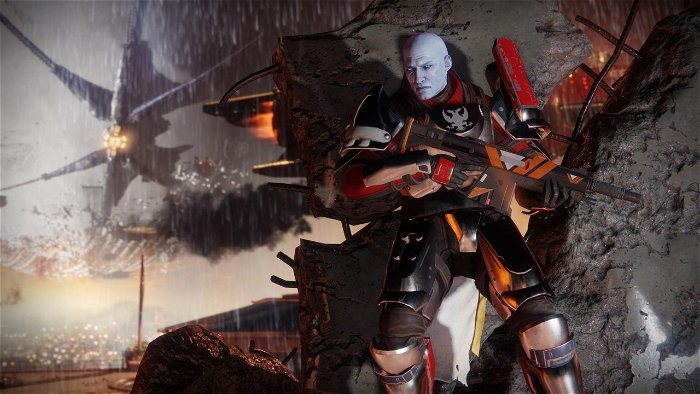
CGMagazine: It is a much more vibrant experience than the first Destiny. Was that a conscious decision or was it the fact that you no longer have to deal with the PS3 or Xbox 360 as platforms, and actually have the full potential of current generation consoles, or was it just, “We want to build more vibrant, bright, and colourful flicks”?
Jesse Van Dyke: I think the logistics became more straightforward for us. But I also think that another thing that was really important for us for Destiny 2 was variety. We want Destiny 2 to be a game that can be played both by people who may only have an hour each week as well as players who want to make it their hobby and spend each day playing the game. The reason why that is important to us is we want those two kinds of players to be able to play together. You might have groups or friends that consist of people with very different time schedules. If my buddy who doesn’t have kids wants to play with me when I have kids it automatically means that we are going to have very different agendas and time schedules. But that’s really important to us—we believe [Destiny 2] is best enjoyed alongside your friends. Another thing that translated was our decision to say [that] we want Destiny 2 be a fresh start. We want both the new and returning players to start at the same point precisely because that allows groups of friends that might consist of people who have played the game very intensively and people who’ve never played it before to both start at the same spot and enjoy the game together.
